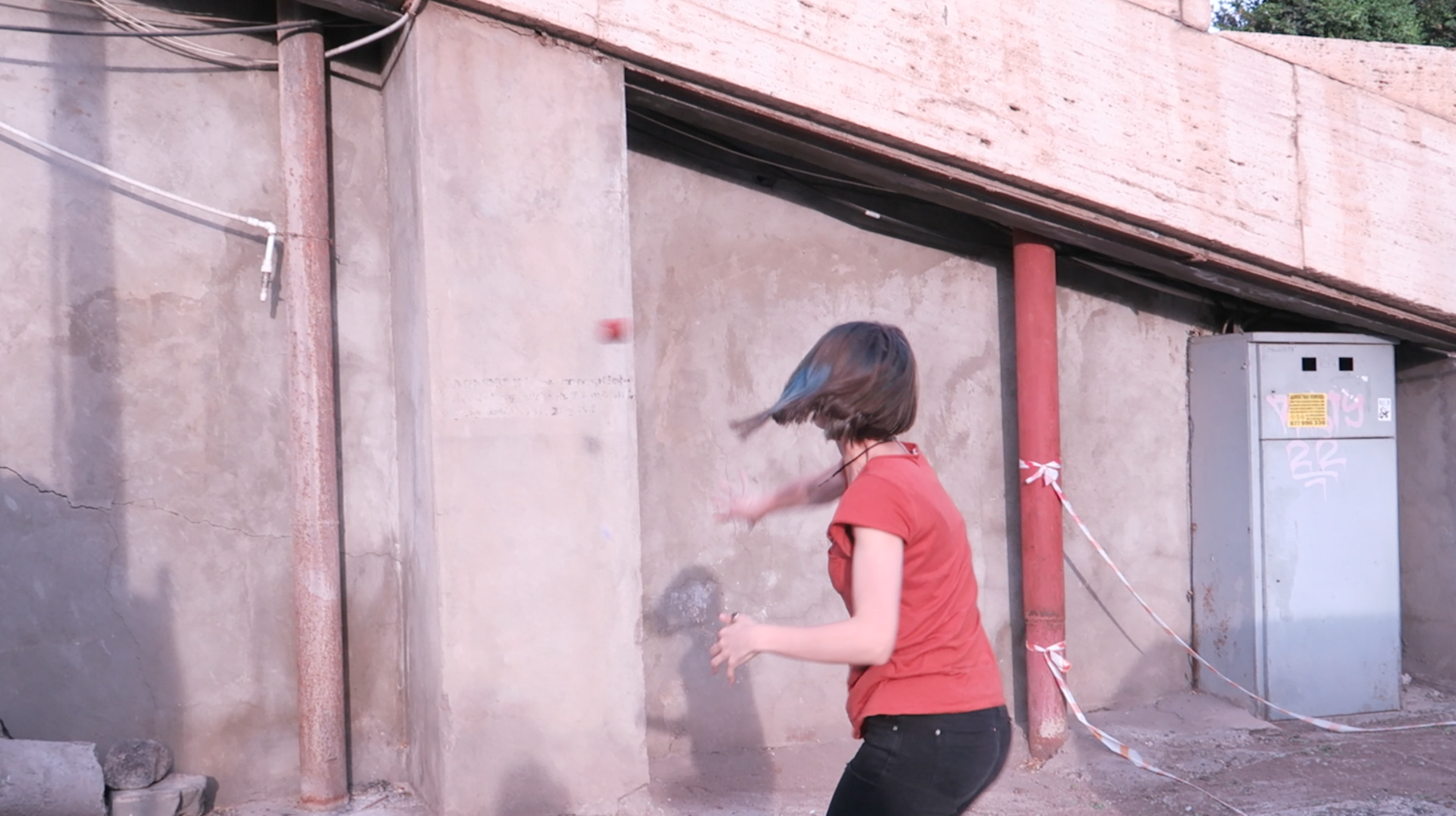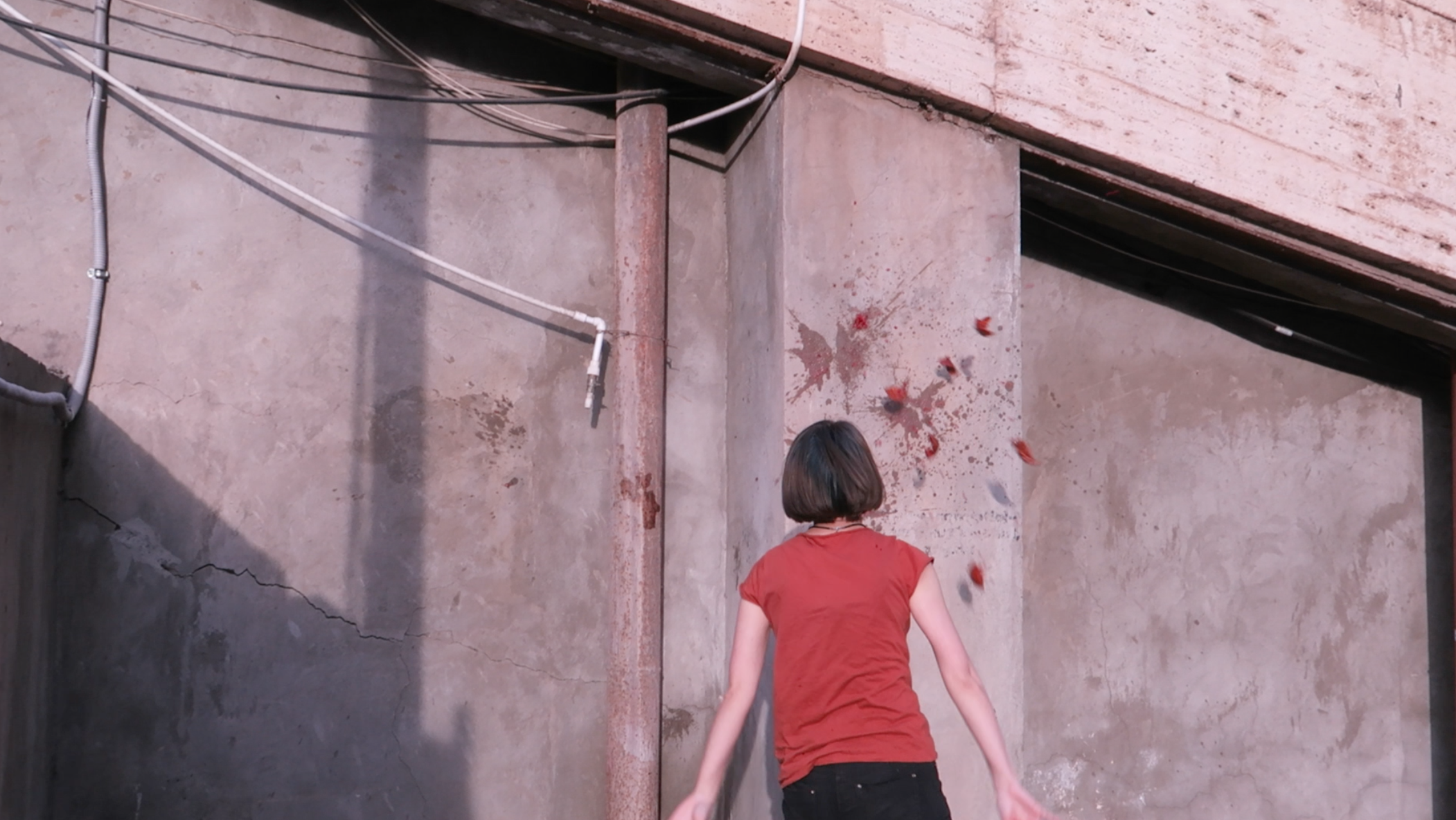Teach me how to sew/saw 2019-ongoing

︎ Photographs, videos, drawings, edition.
︎2019-ongoing
︎Photography, videos, carpets
︎2019-ongoing
︎Photography, videos, carpets
#hybridity #women #transmission #family #Armenia #France #textileindustry
FR
Le projet Teach me how to sew/saw (Apprends moi à coudre/scier ) prend pied entre la France et l’Arménie. J’y suis les trames ambiguës tissées entre diaspora et Arménie indépendante. Une grande partie de la diaspora arménienne est arrivée en Europe à la suite du génocide de 1915. Venant de territoires aujourd’hui en Turquie nombre d’entre eux ne se reconnaissent pas dans l’Arménie actuelle.
C’est à travers une histoire du textile et des motifs que j’entends questionner ces identités. Les symboles qui se répètent dans les tapis (boteh, grenade, mots en arménien) sont des hymnes à la fécondité et à la prospérité. J’ai eu très vite envie de les questionner avec d’autres jeunes femmes.
Les tapis sont aussi des territoires et durant ce travail au long cours l’Arménie à connu des bouleversements énormes: une révolution en 2018 puis la guerre avec l’Azerbaïdjan.
J’ai entamé en 2019 une traversée qui commence à l’usine de tricot où travaillaient mon grand père et mes grand-tantes arméniennes à Valence, France.
Puis je suis partie en Arménie, loin des souvenirs familiaux, dans la capitale Yerevan à la rencontre de jeunes arméniennes militantes de la révolution de 2018.
J’y suis retournée en 2023 redécouvrant un pays mutilé d’une partie de son territoire suite à la guerre avec l’Azerbaidjan, guerre qui a impacté très violemment la jeunesse arménienne.
C’est à travers une histoire du textile et des motifs que j’entends questionner ces identités. Les symboles qui se répètent dans les tapis (boteh, grenade, mots en arménien) sont des hymnes à la fécondité et à la prospérité. J’ai eu très vite envie de les questionner avec d’autres jeunes femmes.
Les tapis sont aussi des territoires et durant ce travail au long cours l’Arménie à connu des bouleversements énormes: une révolution en 2018 puis la guerre avec l’Azerbaïdjan.
J’ai entamé en 2019 une traversée qui commence à l’usine de tricot où travaillaient mon grand père et mes grand-tantes arméniennes à Valence, France.
Puis je suis partie en Arménie, loin des souvenirs familiaux, dans la capitale Yerevan à la rencontre de jeunes arméniennes militantes de la révolution de 2018.
J’y suis retournée en 2023 redécouvrant un pays mutilé d’une partie de son territoire suite à la guerre avec l’Azerbaidjan, guerre qui a impacté très violemment la jeunesse arménienne.
ENG
The Teach me how to sew/saw project takes place between France and Armenia. I follow the ambiguous threads woven between the diaspora and independent Armenia. A large part of the Armenian diaspora arrived in Europe following the 1915 genocide. Coming from territories today in Turkey, many of them do not recognize themselves in present-day Armenia. It is through a history of textiles and patterns that I intend to question these identities. The symbols that are repeated in the carpets (boteh, pomegranate, words in Armenian) are hymns to fertility and prosperity. I very quickly wanted to question them with other young women. Carpets are also territories and during this long-term work, Armenia experienced enormous upheavals: a revolution in 2018 then the war with Azerbaijan. In 2019, I began a journey that began at the knitting factory where my grandfather and my Armenian great-aunts worked in Valence, France. Then I left for Armenia, far from family memories, to the capital Yerevan to meet young Armenian activists of the 2018 revolution. I returned there in 2023, rediscovering a country that had mutilated part of its territory following the war with Azerbaijan, a war which had a very violent impact on Armenian youth.
The Teach me how to sew/saw project takes place between France and Armenia. I follow the ambiguous threads woven between the diaspora and independent Armenia. A large part of the Armenian diaspora arrived in Europe following the 1915 genocide. Coming from territories today in Turkey, many of them do not recognize themselves in present-day Armenia. It is through a history of textiles and patterns that I intend to question these identities. The symbols that are repeated in the carpets (boteh, pomegranate, words in Armenian) are hymns to fertility and prosperity. I very quickly wanted to question them with other young women. Carpets are also territories and during this long-term work, Armenia experienced enormous upheavals: a revolution in 2018 then the war with Azerbaijan. In 2019, I began a journey that began at the knitting factory where my grandfather and my Armenian great-aunts worked in Valence, France. Then I left for Armenia, far from family memories, to the capital Yerevan to meet young Armenian activists of the 2018 revolution. I returned there in 2023, rediscovering a country that had mutilated part of its territory following the war with Azerbaijan, a war which had a very violent impact on Armenian youth.








